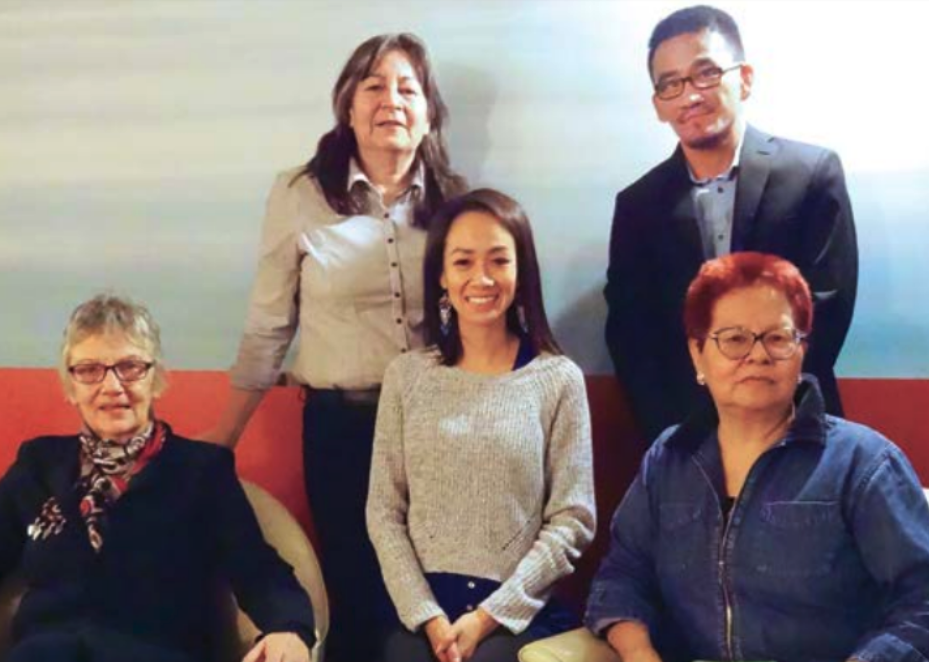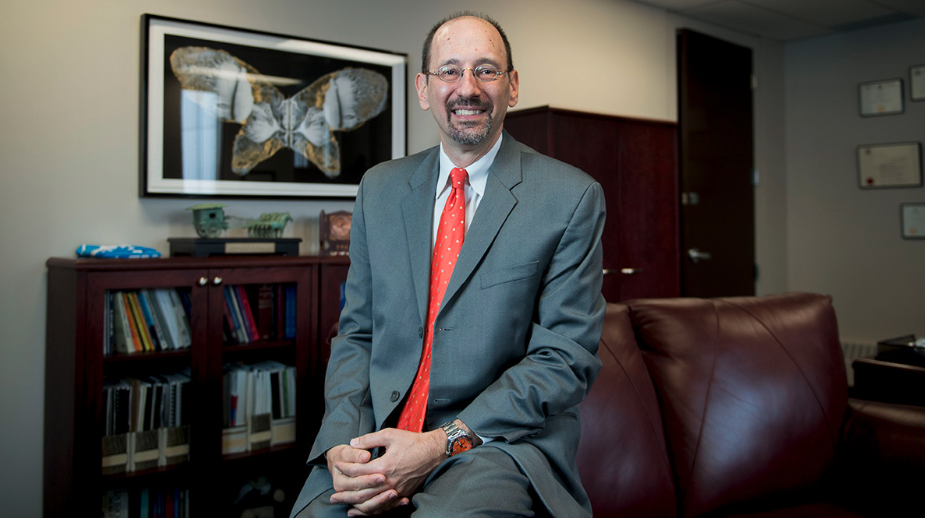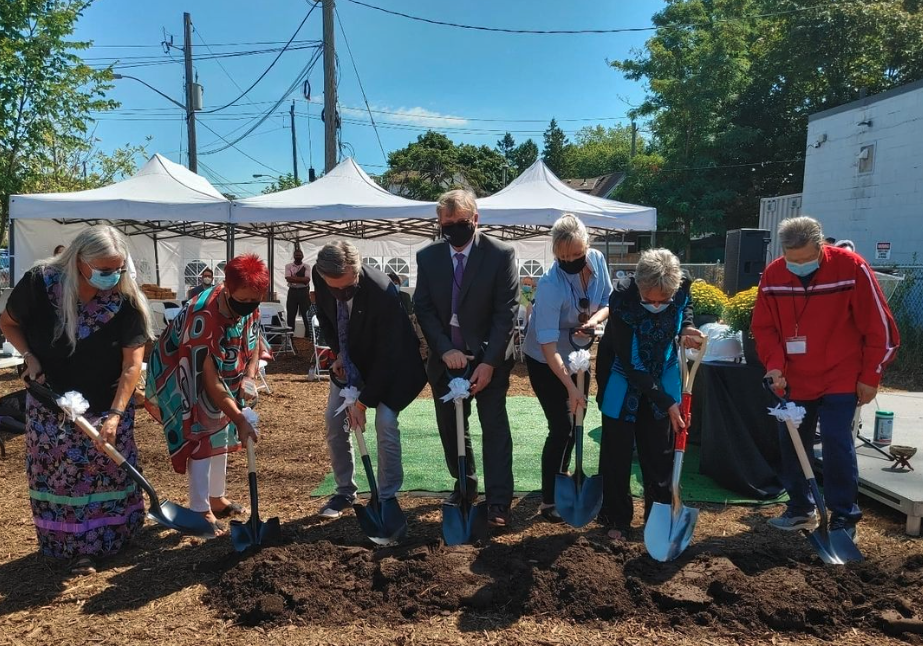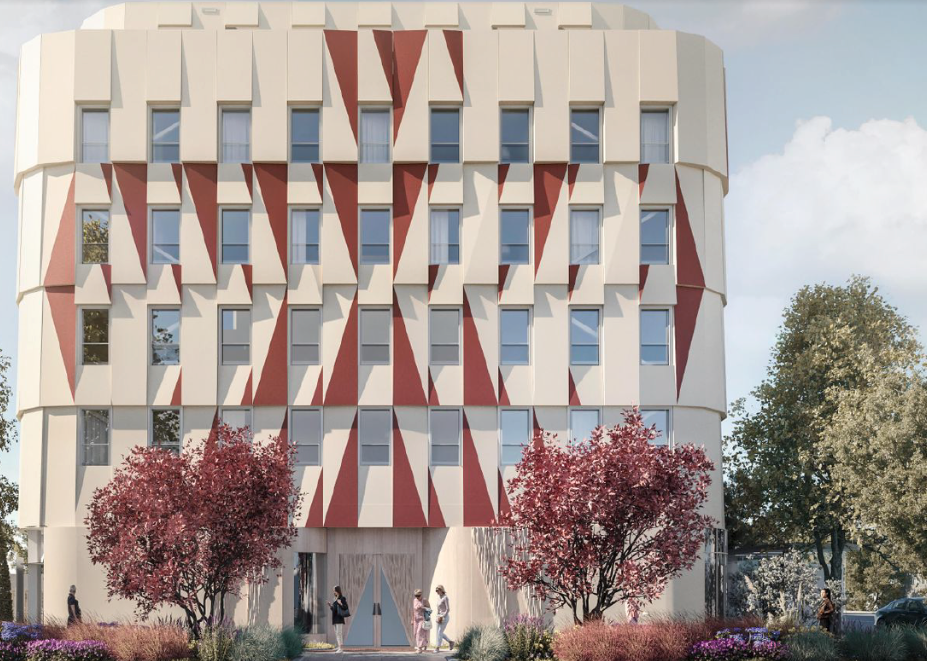NIMBYs. Funder hurdles. Now, rising inflation. Thunder Woman Healing Lodge Society won’t give up
Why It Matters
Charities that run food banks and meals-on-wheels programs aren’t the only ones being hit hard by inflation. Organizations that build community infrastructure, like affordable housing or healing lodges are feeling the pinch too. Funders must close the gap created by inflation in order to realize much-needed community infrastructure projects.

This journalism is made possible by the Future of Good editorial fellowship covering the social impact world’s rapidly changing funding models, supported by Future of Good, Community Foundations of Canada, and United Way Centraide Canada. See our editorial ethics and standards here.
When inflation hit, Patti Pettigrew prayed.
“I lay my tobacco down. I go into my own personal ceremony and I pray. And I ask my guides. [I say] here’s where I’m at. I need some help,” she says.
Pettigrew is the founder and executive director of Thunder Woman Healing Lodge Society, a charity working to build a 24-bed healing lodge for Indigenous women transitioning out of the criminal justice system — the first of its kind in Ontario and only the third of its kind in Canada.
Last summer, as the pandemic lulled in Canada, Pettigrew and her team thought they’d raised enough money — $12.5 million dollars — to build the healing lodge. They’d gotten commitments from the City of Toronto, the Canadian Mortgage and Housing Corporation and several private donors. They’d had designs drawn up, they’d bought a piece of land, and they envisioned a space to offer holistic support to “wounded warriors,” says Pettigrew.
But then inflation hit, supply chains got snaggled up, and the cost of construction materials shot through the roof. When they tendered for general contractors to build the lodge, the responses they got were between 40 and 60 percent more expensive than they’d budgeted for.
“I just pulled out another piece of hair,” says Pettigrew, “and I prayed.”
Straight-forward, plain-spoken and unassuming, 73-year-old Patti Pettigrew has been working to bring the vision of a healing lodge to life for more than 15 years.
The project is much-needed. In December, the federal correctional investigator released new data showing that Indigenous women — who make up less than 5 percent of the total population — comprise nearly 50 percent of the federal prison population — a reality he called “shocking and shameful.”
In the process of trying to build the lodge, Pettigrew has battled racism and NIMBYs — folks not keen to see a lodge built in their own backyard. She’s been ignored by Correctional Service Canada, the agency that oversees federal prisons. And she’s been stonewalled by the Canadian Mortgage and Housing Corporation, who refuse to increase their funding for the project to account for the new inflationary environment.
Experts say the example of Thunder Woman Healing Lodge Society highlights several federal funding barriers that must change in order to enable charitable organizations — and particularly Indigenous-led organizations — to build crucial community infrastructure. These barriers have only become more pronounced during this period of high inflation.
Pettigrew is confident they’ll find a way. “You just can’t let a vision go,” she says. “We need this. Indigenous people, we need this. And there’s just no stopping it.”

‘Don’t let this be another report’
The idea for the lodge came to Patti Pettigrew when she in her mid-fifties, working as a drug and alcohol program coordinator for the Elizabeth Fry Toronto, on the territory of the Mississaugas of the Credit, Anishnabeg, Chippewa, Haudenosaunee and the Wendat.
She was the only Indigenous person working for the organization at the time, she says, and as a result, she worked with all of the Indigenous clients. “What became evident,” she says, “was that the needs of Indigenous women weren’t being met by E-Fry. And I mean, how could [they] be?” Elizabeth Fry is a good organization and does a lot of good work, Pettigrew says, but they’re not an Indigenous organization.
She remembered an organization she’d come across in Vancouver, when she lived there some years before. The Circle of Eagles Healing Lodge Society offers a 17-bed healing lodge in a green clapboard home for men leaving corrections. They provide a sweat lodge, connections to elders, and employment and spiritual support for men following the “Red Path.”
“I was really impressed with it,” says Pettigrew. And “I realized that’s what I wanted to do. I wanted to get together a healing lodge for Indigenous women leaving corrections.”
It was a bold vision.
The trouble was, Pettigrew didn’t know how to build a healing lodge, she says, and there wasn’t an obvious place to turn for support.
In the earliest days, she fundraised on foot with a team of volunteers. They would go down to Union subway station, hold out tin cans and ask people for support. A women’s choir raised some money for the lodge. And volunteers held a couple of events, selling tickets to raise additional funds.
In 2015, Thunder Woman had their first big break: a $50,000 grant from Aboriginal Healing Foundation, which they used to do a study looking into the viability of a “section 81” healing lodge for Indigenous women in Toronto.
In 1992, the federal government changed the law, allowing for the creation of Indigenous-run healing lodges, through section 81 agreements, which could serve as an alternative to federal prison for Indigenous people. The change, pushed for by Indigenous communities, was intended to improve the over-representation of Indigenous people in federal prisons and improve incarceration outcomes for Indigenous people.
Using these funds, the burgeoning Thunder Women’s team conducted consultations with community members and found strong support for the project. “Members of the community said to me, ‘We really need this Patti. Please don’t let this be another research project that gets put on a shelf,’” says Pettigrew.
Later that year, the all-volunteer team registered Thunder Woman as a non-profit. Two years later, they partnered with George Brown College on a “design charrette” to further detail the project’s funding plan, architectural plan, and programming. And in the spring of 2019, they secured cornerstone funding, a $3.6 million capital commitment, from Miziwe Biik Development Corporation.
The project was humming along, but would soon run head-long into one of their next big hurdles: racism.

NIMBYism, racism and fear at community consultation
On a sunny evening in June 2019, about 400 people packed into the gymnasium of the Birchmount Bluffs Neighbourhood Centre in Scarborough to hear about plans for a new healing lodge for Indigenous women in their community.
By that time, Pettigrew and her team had identified a site where they planned to build the healing lodge: 2217 Kingston Rd. To do so however, they needed the city to approve a change to the area’s zoning bylaw. As is custom when a zoning change is sought, they hosted a community meeting to gather input.
Many community members came to support Pettigrew and her team, but there were others at the meeting who were “quite hostile,” Pettigrew says. One resident read out a list of the most common crimes committed by Indigenous offenders, and asked, “Why are you bringing in criminals to our community?” according to Beach Metro Community News.
Others said it wasn’t safe to have the facility so close to two local schools and that the proposed plan for the lodge didn’t include enough parking.
Pettigrew says “some people were genuinely afraid,” and had legitimate questions. For others, however, it was “racism veiled in this concern for the neighborhood.”
To try and diffuse tension, Pettigrew and local city councillor Gary Crawford hosted several small, follow-up consultations to talk to the community about the project. During the sessions, she described the approach the lodge would take — that they would offer restorative care and cultural programming and that her team would offer 24/7 support to women living in the facility.
Despite the push-back from some neighbours, Thunder Woman got approval from the committee of adjustment to move forward with the project. Later that year, they purchased the land.
It was a celebratory day, but next on the horizon was raising enough to complete construction for the project — a task that brought Pettigrew to Ottawa to meet with then Public Safety minister Bill Blair.

Correctional Service Canada doesn’t give funds for ‘bricks and mortar’
In early spring 2020, just before the pandemic hit, Pettigrew went to Ottawa to meet with then Public Safety Minister Bill Blair, looking for funding to help cover planning and construction costs for the lodge.
Pettigrew was coming to Blair as the minister who, at the time, oversaw the budget for federal corrections in Canada.
In the healing lodge, Thunder Woman plans to offer four Section 81 “federal beds,” available to Indigenous women held in federal prisons, four “provincial beds,” for women who are on probation, and four beds available to women whose charges are before the court, who haven’t been convicted. They also plan to offer 12, low-rent, transitional apartments for Indigenous women who have been in contact with the corrections system.
By the time of their meeting, Pettigrew had already locked down commitments from all three levels of government, but was still short on funds. Pettigrew says she asked Blair for $350,000 to pay the engineers and the architects to get finalized building design and $1 million to build the lodge in an environmentally responsible way.
“He said that he was definitely going to look into it to see if they could assist us,” she says. “He promised to get back to me within three weeks. He shook my hand. And I never heard from him again.”
In an interview in June, Marty Maltby, acting director of Correctional Service Canada (CSC)’s Indigenous initiatives directorate, says he isn’t privy to information about meetings with Blair, but says that in 2019, when he spoke with Pettigrew, he told her CSC couldn’t fund capital projects and to instead apply for funds through other federal programs.
Maltby says most of the other six Indigenous-led healing lodges that have been established have repurposed existing space they had available, and that Thunder Woman is unique in wanting to build a new building. He says that while CSC is able to offer small amounts of capital funding to existing healing lodges or community residential facilities, to, for instance, install security cameras or install locks, but they can’t provide funding to build a new building.
Dr. Ivan Zinger, federal correctional investigator, sees it less as a question of funding capacity, and more of a question of funding priorities. In an interview in late May, Zinger says that despite the 1992 commitment to support Indigenous-run healing lodges, over time, CSC has funneled more resources into programs and services for Indigenous inmates within federal penitentiaries, rather than Indigenous-run lodges.
“In the year 2000, corrections made a conscientious choice to put all of their resources into Indigenous corrections inside penitentiaries…and basically started shying away from new initiatives for Section 81,” he says.
He pointed to a 2012 report, Spirit Matters, which said that between 2000 and 2010, CSC had a budget of over $30 million to improve prison outcomes for Indigenous people, including to construct and operate new section 81 healing lodges. Yet, only one new lodge was created during that period. A CSC report from the time said that beginning in 2001, the agency “re-profiled funds from healing lodge development to institutional initiatives” that supported Indigenous people within federal penitentiaries.
Maltby disputes that CSC has shied away from investing in healing lodges, and instead insists the department has actually sought out new Indigenous communities to engage in section 81 agreements.
“Section 81 healing lodges continue to be a priority for the organization,” he says, noting that over the last several years CSC has renewed operational funding agreements with each of the existing Indigenous-led healing lodges, expanded bed capacity in several, and improved the funding formula to offer more stability for existing lodges.
He says they’ve done outreach with Indigenous communities in Ontario, Quebec and the Atlantic provinces, seeking to increase capacity in the Eastern part of the country, but that there hasn’t been much uptake. “I’ll be honest with you,” he says, “some have had some legs and gone a little ways, others, unfortunately — communities aren’t interested.”
Maltby says there have been a variety of stumbling blocks for Indigenous communities: some have too much on their plate and some want to create initiatives that are beyond the scope of what CSC can offer. Others, he says, don’t have many members of their communities in federal penitentiaries and don’t have a mandate to invest in programs that would primarily serve members of other nations or bands.
When asked about Thunder Woman specifically — an Ontario based, Indigenous-led charity, interested in developing a healing lodge with four section 81 beds — Maltby says that they just don’t have the authority for capital funding.
Zinger says this is a problem. Several years ago, he says, he called on CSC to reallocate a “huge portion” of its budget to Indigenous communities and groups, including providing funding for capital costs for new section 81 initiatives.
As rationale for this demand, he lists all of the ways Indigenous people fare worse than their non-Indigenous counterparts in federal penitentiaries: they’re more likely to be subject to use of force from guards, they have higher rates of administrative segregation, and they’re more likely to serve a longer sentence before being given parole. He also says Indigenous prisoners are more likely to self-harm or attempt suicide while in jail; and that when released, they’re also more likely to have their parole suspended or revoked.
“That’s why corrections should just accept the fact that they can’t do Indigenous corrections justice, even with the huge amount of resources they’re investing,” he says.
Zinger says he’s not for “de-funding” corrections, as some have called for in recent years, but rather he’s for re-allocating resources — both for social and economic objectives: “In the long-run, it will be way cheaper, and will improve correctional outcomes and improve public safety. Healing lodges get better results in the end and that translates into safer communities for everybody.”
A 2016 auditor general’s report found that Indigenous people released from healing lodges were 15 percent more likely to successfully complete their supervision than those released from minimum security institutions.
Of CSC’s refusal to support capital costs, Pettigrew says: “You cannot help but wonder: What is going on here? This is not reconciliation. They flaunt that word ‘reconciliation’ around. [But] they don’t even know what it means — and if they do, then they’re not doing it.”
Pettigrew says she followed up with Blair several times, but never heard back: “So I thought, ‘To hell with him, we’ll continue on.’”

CMHC initially ‘dug deep’ for project
Soon after Pettigrew returned home, the pandemic hit. Witnessing COVID outbreaks in jails, communities put pressure on the federal and provincial governments to release people from prisons and they did. In April 2020, there were about 6,000 fewer inmates in Canadian prisons compared with two months prior.
But while this move decreased the risk of spreading the virus within jails, lots of former inmates didn’t have anywhere to go. To help, Thunder Woman rented hotel rooms, offering short-term shelter, transportation, COVID testing and food. Later in the year, they also rented a home in Toronto’s Cabbagetown neighborhood to begin operations of a healing lodge — feeling that the needs of the community couldn’t wait for capital fundraising and construction of the permanent lodge to be complete.
In parallel, the team negotiated with the Canadian Mortgage and Housing Corporation for funding to build the lodge in Scarborough. In the early stages of these conversations, Claire Brewster, a housing consultant working with Thunder Woman, says that CMHC was very supportive — that they “dug deep” for the project. Things hit a snag however, in September.
In pre-development construction, groups budget based on pricing assumptions — how much a square foot will cost to build based on current prices. But over the last eighteen months, prices have shot up — “from timber to steel, to everything,” says Pettigrew.
Though Thunder Woman had secured an agreement with CMHC, when they went to tender last summer, prices came back way higher than they’d expected, jumping from $12.5 million to build the lodge to between $18 and $23 million — nearly double what they anticipated.
Brewster says that they had several factors working against them. For one, CMHC requires that all organizations get “fixed price” contracts from suppliers. This means that construction companies have to give an upfront, firm price that they’re willing to complete the project for.
This is good policy in that it ensures non-profits and their funders aren’t hit by dramatic cost-overruns mid-project, Brewster says, but it’s tricky in an inflationary environment, because contractors pad their budgets to account for the increased risk they’re taking on. “And every subcontractor in that bundle is also doing the same thing,” she says.
To make budget matters worse, CMHC also told Thunder Woman that they’d need to increase their “contingency” budget — funds available in the event that something went awry in construction. Brewster says that it’s not unusual that CMHC wants more certainty. “What I think is unreasonable,” she says, “is that certainty is not free.”
Brewter says CMHC’s underwriters have a clear sense of the increased costs organizations incur when they ask contractors for fixed prices. “What the funders are not good at,” she says, “is adjusting their funding guidelines to accommodate.”
Christine Pacini, a partner with non-profit affordable housing specialist SHS Consulting, says the government needs to put more money on the table to help non-profit projects make up for the difference caused by inflation and increased risk.
“The solution to that is needing to recognize that costs have gone up and their formula for determining how much capital or grants they provide needs to change to address that,” she says.
Pacini says she reviewed the budgets of several non-profit clients who had applied for CMHC co-investment funding. She found that CMHC provided about 50 percent of the total project budget — about 10 percent in grants and 40 percent in low-interest loans.
“So that means, not-for-profit groups need to come up with the balance someway,” she says.
Pacini says that groups like Thunder Woman that are in the City of Toronto are often able to get generous contributions from the municipality, but that amount, Pacini says, only normally accounts for about 10-15 percent of a standard project budget.
Non-profit groups, she says, then need to then fundraise the rest. “I would say that’s the biggest issue. That’s why these projects are taking so long, is because groups have to cobble together funding from so many different sources,” she says.
By email, David Harris, a CMHC spokesperson says the agency is “closely monitoring” the trends in rising construction costs, but provided no indication that the agency is considering changes to their funding formula to account for the inflationary environment.
He said that as of March 31, CMHC’s national co-investment fund has provided over $3.4 billion in low-cost loans and over $1.8 billion in grants to create new housing and repair existing housing units. He also said the agency has worked to increase accessibility to CMHC support for Indigenous partners, citing streamlined funding application requirements, a simplified online portal and new website landing page for Indigenous and northern communities.
But through interviews with Pettigrew and Brewster in May and June, the pair never mentioned issues with the CMHC website. What they’ve struggled with, they’ve said, is generating the funds to build a healing lodge.
“At every turn, we have to translate Indigenous healing lodges into the language and the funding framework of their program streams, be it housing, you name it,” Brewster says. “By in large, these are colonial priorities. They’re colonist priorities. They’re not reflective of Indigenous priorities.”
Last fall, in response to their higher-than-expected tenders, Brewster says that CMHC didn’t offer any flexibility: “CMHC said come back to us with a balanced budget or put the project on hold until the market wears out.”

Healing lodge set to open its doors December 2023
This spring, things have started to turn around for Thunder Woman Healing Lodge Society.
In mid-May, Pettigrew drove to Ottawa, where she met with the head of the Buffalo Sage Wellness House, one of two section 81 healing lodges for women in Canada. They spoke about starting an alliance amongst healing lodges across the country — to lobby, to share information and to raise awareness about the role of healing lodges.
Two weeks later, on May 27, Blair’s successor, Public Safety minister Marco Mendocino, issued a mandate letter to the correctional service commissioner — the top bureaucratic role for CSC. He instructed commissioner Anne Kelly to prioritize “working with and funding Indigenous organizations to create section 81” agreements…to ensure that Indigenous offenders have access to culturally-relevant programming and supports in the community.”
By email, a spokesperson for CSC says that while the agency doesn’t currently have new funds for capital projects, they are “currently assessing options on potential sources of funds” to create additional healing lodges — and that they remain deeply committed to the Indigenous corrections file.
Outside of CSC and CMHC, funding conversations have also progressed. This summer, Indigenous Services Canada and the City of Toronto each awarded Thunder Woman $2 million in capital support. Brewster says these commitments close the funding gap the project faced in January, when they submitted these funding applications, but that if inflation keeps eroding the value of their dollar, they’ll need to raise additional capital.
Despite all of these hurdles, Pettigrew is confident they’ll find a way to get a healing lodge built.
By phone, she says: “There have been multiple times throughout that I shake my head because I know that, if the spirits that had given me this vision had revealed the whole journey, I don’t know if I would have thought that I would be strong enough to do it. And that’s the truth.
“All throughout this journey I have wondered ‘Oh my God, what did I get myself into?’ But you can’t stop. I can’t stop. It’s a vision — and you don’t do that, when it comes to you like this. I [also] can’t stop, because there are so many Indigenous, Métis, Inuit women, First Nations, Two Spirited women, who are in need of this and who are relying on it,” she says.
“So, they can put up all of the roadblocks they want, I’m just going to blow up each one.”

